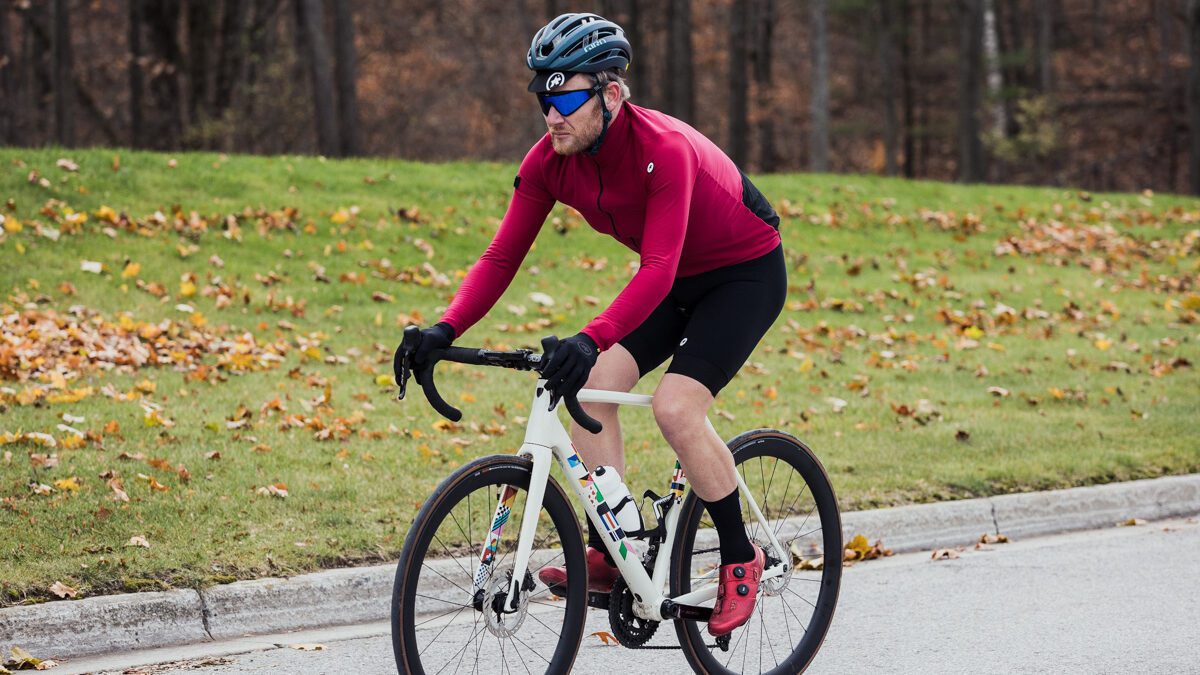4 important things I learned this year about my training
2023 is almost over, and it’s been an interesting 12 months
 Photo by:
Matt Stetson
Photo by:
Matt Stetson
It’s always fun to reflect on the year that’s been–the good and the bad–when the final days of 2023 come about. Although I’ve been riding regularly since I finished up racing full-time many, many, many years ago, I only started “training” when I began here at Canadian Cycling Magazine a few years ago. I jumped into some races and it was a rude awakening, for sure.
1.Position on trainer, avoiding injuries
When Uncle Matt raced 20 years ago, we of course had trainers-but no Zwift. Before we would head down south or across the pond, we’d mix up our training with riding on a trainer–looking at the wall (which isn’t nearly as exciting as it sounds)–and riding MTBs on the gravel roads in the frigid temps. Still not really sure those five-hour rides in the snow did much apart from burn calories, but that’s what we did.
So when I began here, I discovered the “joy” of direct-driver trainers that give you a smooth ride–and more importantly, programs like Zwift that make riding bearable. After doing some local races and being humbled, to say the least, last winter I set out to do some big miles indoors with intensity and get into form. It was going well–I was getting leaner and faster–and I was excited to ride some of the races I previously got smoked in.
Adjusting for comfort
I had an old Cervélo that had a high stack height and short stem as my trainer bike. But one day I had problems with the cogs, so I decided to put on my Cannondale–my race bike–which had a 130 mm stem. I’ve always preferred stretched out positions–and it’s fine and comfortable outdoors–but riding it inside with that set-up was not wise. After a few weeks, an old injury in my neck flared up and soon enough I was in crippling pain, unable to ride even 5 minutes outside.
It was a rough time for me, as I wasn’t really used to having pain in my neck while riding. I am used to being one—ask my cranky editor (ed. Hey! I heard that!)—but I was more used to having knee or back pain. After several months of riding very little, getting some physio and treatments, I was good again. But what seems obvious now, I learned that your indoor bike should have a much more upright and relaxed position–at least for me–given that you don’t wiggle around like you do outside. I am careful to change positions as much as possible riding indoors now–sitting hands-free helps too–because I never want to go through with that again.
2. Two days intensity is just fine
When I used to race full-time, feeling like a zombie was normal. We’d do 25-30 hour weeks, but that still meant motorpacing, intervals and hard rides. And sure, we got very, very fit–but we felt like garbage most of the time.
I’m older and slower now, and my recovery isn’t the same–but either way, I wish I knew then that limiting your intensity to a few days a week, and then doing endurance for the other days, meant I may have made more gains. Again, sounds obvious, but of course you’ll be better doing intervals if you’re fresh. And you’ll get faster.
3. Patience with gains
Speaking of gains, an old teammate of mine, told me that I should expect a few years before I feel remotely fit again. He had gone through the same thing as I had–he retired from cycling with an impressive palmarès, and continued to ride after, but not what you’d call, “training.” When he did resume dedicated training, he said it took almost three years before he felt somewhat quick again.
I can confirm this as well. Only now am I feeling reasonably fit on local rides. It took a while, but it’s important to have patience and now the work will pay off…eventually.
4. Walking is a great tool
For cyclists, walking was always considered to be the worst. thing. Ever. It wears you out, tires your legs, and should be avoided. That still may be true if you’re doing the Tour de France, but if you’re looking for a great way to get some extra exercise in, or to shed some weight, walking is ideal. It doesn’t even feel like exercise–and it’s easy and doesn’t require special equipment. You can incorporate it easily into your routine, whether that means a walk after work, or a long ride–or doing errands.
If your only exercise is cycling, brisk walking can be beneficial for increasing bone density. It also uses muscles that you may not use riding, which can be good for injury prevention. Pro cyclist Ruby West is a big fan as well. “I am someone who is big into doing stuff off the bike. It’s not just hiking or running, but I also believe in functional movement,” she said. The national team rider joked that her parents say cyclists, “are fit athletes, but not fit people.” So get out there and take a stroll. It’s good stuff.
2024 is around the corner, and I am excited to keep progressing and learning. Because that’s the point of all this, right?
